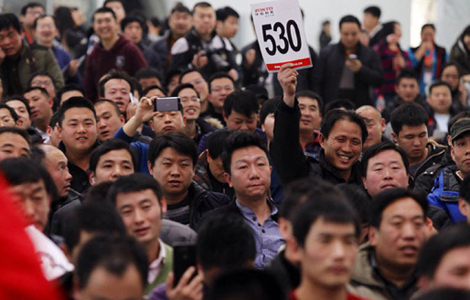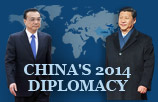More investment planning sought
Updated: 2015-01-26 05:49
By ZHANG YUCHEN in Beijing(China Daily Latin America)
|
||||||||
Investment should be strengthened as part of cooperation between Latin American countries and China, said Chile's ambassador to China, Jorge Heine.
Growth of Chinese investment in Latin American countries has been to some extent difficult, Heine said a couple of weeks after the conclusion of a meeting between China and a grouping of Latin American and Caribbean states, collectively known by the acronym CELAC. The landmark China-CELAC forum was held Jan 8 and 9 in Beijing.
The first ministerial meeting of China-CELAC yielded three key documents to steer both sides’ through their bilateral cooperation.
"The timing of the forum was very significant because we are at the turning point of the relations between China and Latin America," Heine said.
The year began with the success of the China-CELAC ministerial meetings that symbolized the relations between China and Latin American countries and highlighted changes in trends, including a GDP of 7.4 percent for China in 2014, the lowest of the past two decades, alongside a downward shift in the price of oil and commodities in world markets.
Energy, infrastructure and agriculture are three key areas in need of strengthening in the bilateral trades. China and Chile's total trade volume amounted $33 billion in 2013, with Chilean exports of $19 billion to China, which included $4 billion of non-copper trade, fresh fruits and wine.
Since China joined the World Trade Organization in 2001, trade between it and Latin America grew from 1 percent to a current 11 percent. China has risen to chase closely after Latin America's traditional trade partners, the US and Western Europe.
Half the trade Latin American countries conduct in Asia is with China. Besides, the presence of Chinese banks in Latin America and the internationalized Chinese yuan have both been measures of forecasting financial cooperation between the two parts.
"All this means the increasingly tight links need to be structuralized or organized," said Heine.
The next step could be to have summits between China and Latin American countries. But it does not mean the CELAC will replace the bilateral relationships between China and each Latin American country. Regional projects should be emphasized more. "The hard work has already begun that makes things happen," Heine said.
Chile has been in need of more roads, ports and airports and willing to cooperate with Chinese partners but it is rare to see the government-to-government cooperation model used in the Latin America.
The international-oriented Chinese companies have the will to do business in the region but they have to learn to do it even without the government in the frame, the ambassador said.
zhangyuchen@chinadaily.com.cn

 Red carpet of 21st annual SAG Awards in Los Angeles
Red carpet of 21st annual SAG Awards in Los Angeles
 Businesswomen shine at the World Economic Forum
Businesswomen shine at the World Economic Forum
 Dogs compete at the Siberean Cup
Dogs compete at the Siberean Cup
 The world in photos: Jan 19-25
The world in photos: Jan 19-25
 Drama with a twist
Drama with a twist
 Auctions of official vehicles starts in Beijing
Auctions of official vehicles starts in Beijing
 Icy challenge in freezing temperatures
Icy challenge in freezing temperatures
 Chinese stars join new reality show 'Wonderful Friends'
Chinese stars join new reality show 'Wonderful Friends'
Most Viewed
Editor's Picks

|

|

|

|

|

|
Today's Top News
Favorable visa policy to draw talent
Chinese tourists rank US No 1 road trip destination
Expert: What Obama's India visit means to China
2 dead after shooting inside Manhattan store
China's signal of innovation in Davos
China's coal industry freezes over
China further lowers threshold to attract overseas talent
China disqualifies 300 intangible cultural heritage programs
US Weekly

|

|







